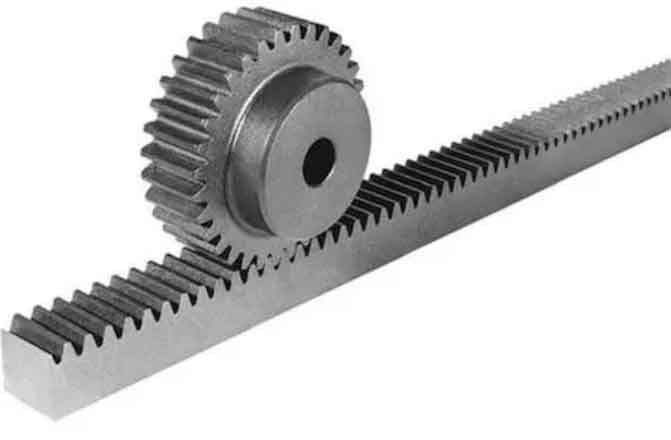
Rack and pinion gear mechanisms are widely used in various applications to enable smooth and controlled motion. The interaction between the rack (a linear gear) and the pinion gear allows for precise and linear movement in a controlled manner. Here’s a closer look at how rack and pinion gear mechanisms enable smooth and controlled motion:
1. Linear Motion Conversion:
Rack and pinion gear mechanisms convert rotational motion into linear motion or vice versa. As the pinion gear rotates, its teeth engage with the teeth of the rack, causing the rack to move linearly. This linear motion conversion enables smooth and controlled movement in a straight line.
2. Precise Positioning:
Rack and pinion gear mechanisms provide precise positioning capabilities. The engagement between the teeth of the rack and pinion gear ensures accurate and repeatable positioning, allowing for precise control over the motion. This precision is crucial in applications that require accurate and controlled movement, such as CNC machines, robotics, and linear actuators.
3. Smooth Operation:
Rack and pinion gear mechanisms offer smooth and quiet operation when properly designed and lubricated. The rolling contact between the teeth of the rack and pinion gear, along with the use of suitable lubricants, reduces friction and ensures smooth motion without vibration or noise. This smooth operation is desirable in applications where smooth and controlled motion is essential.
4. High Torque Transmission:
Rack and pinion gear mechanisms are capable of transmitting high torque. The interaction between the teeth of the pinion gear and the rack provides a strong and reliable power transmission, allowing for the transfer of high torque forces. This makes rack and pinion gears suitable for applications that require high force and torque, such as heavy-duty machinery and equipment.
5. Backlash Minimization:
Backlash refers to the slight clearance or free movement between the teeth of the rack and pinion gear when the direction of motion changes. Minimizing backlash is crucial for achieving precise and controlled motion. Proper design and manufacturing techniques can help reduce backlash, ensuring smooth and accurate movement without any undesired play or sloppiness.
6. Compact Design:
Rack and pinion gear mechanisms offer a compact design, making them suitable for applications with limited space. The linear motion is achieved directly without the need for additional components like belts, pulleys, or extra gears. This compactness simplifies the overall system design and saves space.
7. High Efficiency:
Rack and pinion gear mechanisms provide high efficiency in power transmission. The direct contact and rolling action between the rack and pinion gear teeth minimize power losses compared to other transmission systems. This high efficiency ensures that the available power is effectively utilized in generating linear motion.
Rack and pinion gear mechanisms have proven to be effective in enabling smooth and controlled motion in various applications. Their ability to convert rotational motion to linear motion, precise positioning, smooth operation, high torque transmission, backlash minimization, compact design, and high efficiency make them versatile and widely used in industries such as automation, robotics, CNC machining, and more.
